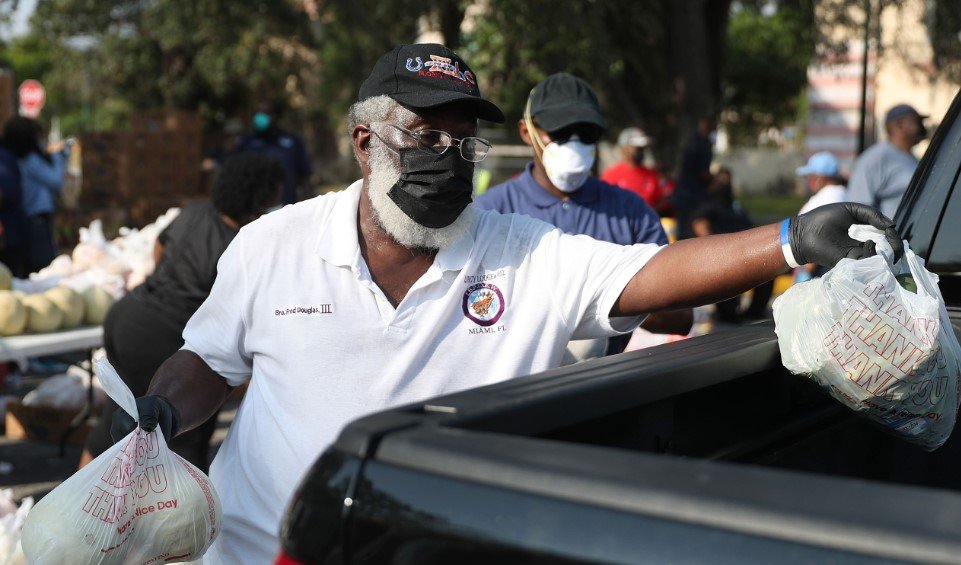Federal funding cuts are hitting both sides of the supply chain—families in need and the farmers trying to help them.
Before the sun rises over South Florida, warehouse lights flicker on at Feeding South Florida’s facility. Forklifts whir through the aisles, lifting pallets of canned goods, produce, and hygiene items. Volunteers clock in. The grind starts early—and lately, it feels like it never ends.
The nonprofit, which serves over a million people across four counties, is scrambling to make ends meet after a massive federal budget cut wiped out nearly half its food-buying power. It’s not just food banks feeling the pressure. Local farmers are now staring at rows of crops with no path to hungry families.
$1 Billion Gone and Everyone Feels It
In March, the White House’s Department of Government Efficiency (DOGE) slashed about $1 billion from USDA programs. These cuts had real teeth. Two programs—both quietly effective—once helped food banks and schools buy directly from local farms. That funding is now history.
Paco Vélez, CEO of Feeding South Florida, didn’t sugarcoat the situation.
“We’ve been seeing empty racks since February,” he said. “These cuts have really made an impact, not just on our ability to serve, but on the families’ ability to thrive.”

His organization lost access to 40% of its $37 million budget because of the cuts.
What’s happening in Miami is a snapshot of a bigger national picture. Other states—like Texas, California, and Illinois—are also bracing for deeper food insecurity. But South Florida, with its high housing costs and deep income inequality, was already walking a tightrope.
A Lifeline That’s Now Fraying
Rosalyn Budgett, who lives on a fixed income, depends on the food bank to get by. She visits every two months and says it’s the only way she can afford balanced meals.
Her words aren’t dramatic—they’re honest. Inflation hasn’t spared Florida. The cost of groceries is still about 20% higher than it was just three years ago, according to the Bureau of Labor Statistics.
At Ebenezer Church in South Miami, the line of cars for the weekly food handout is longer than ever. Pastor Roberto Blanco, who coordinates with Feeding South Florida, sees the emotional toll first-hand.
He’s working with fewer supplies but more families. “It’s heartbreaking,” he told CBS News.
Farmers Feel the Crunch, Too
The cuts didn’t just sever a supply chain—they broke a partnership. One that took years to build between farmers and food banks.
East Coast Farm and Vegetables, a family-run operation near Parkland, Florida, used to work with Feeding South Florida under a USDA program. They would harvest surplus vegetables, process them, and ship them to food banks—all funded by federal dollars.
Now, those dollars are gone.
Katelyn Garcia, VP at the farm, is worried. “This program… was a great use of our tax dollars,” she said. “We were helping farmers and feeding families.”
Here’s the reality:
-
Without funding, farms can’t afford to process crops.
-
Without processing, produce rots.
-
And families go hungry while good food spoils in the field.
Some farmers are considering plowing their unsold vegetables back into the dirt. “It feels wasteful,” Garcia added. “It is wasteful.”
By the Numbers: What’s at Stake
To understand the depth of the damage, it helps to look at some of the hard numbers:
Feeding South Florida is trying to stretch every dollar. They’ve added drop-off points, recruited more volunteers, and leaned harder on local donors. But the gap is growing. Fast.
More Than Just Meals
There’s something deeper at play here—something beyond boxes of canned soup and bags of potatoes.
Food banks have become more than food distributors. They’re community hubs. Emergency responders. Stabilizers in chaotic times. During the pandemic, they served as literal lifelines. Now, they’re being asked to do more with less.
And families aren’t just picking up food. They’re picking up diapers, feminine hygiene products, toothpaste. Essentials that SNAP benefits don’t cover.
One mom at a South Miami distribution site said she used to come just for food. Now, she comes for everything. “I lost my second job. This is how we survive.”








